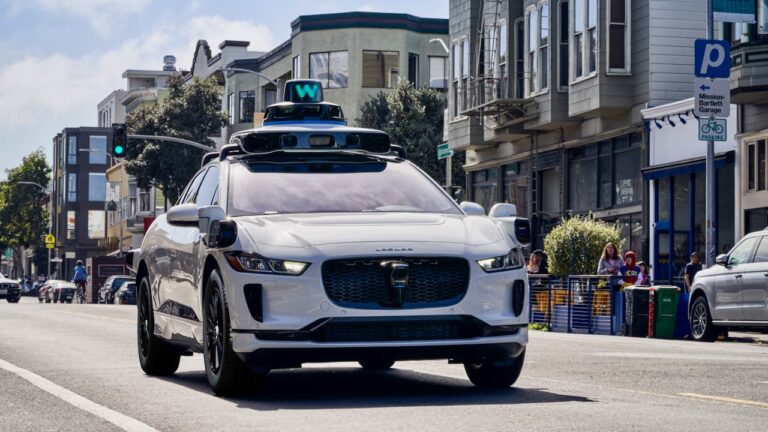Search
2021 Conference Panel 1: Emerging Transportation Technologies, a Primer
The 2021 Law and Mobility Conference opened with a panel, moderated by Emily Frascaroli, that set out to begin answering three questions: What are emerging transportation technologies? What is the legal landscape surrounding these technologies? What are some challenges that these technologies face, in terms of both gaining…2021 Conference Panel 2: Transportation Equity and Emerging Technologies
By Christopher Chorzepa and Phillip Washburn Week 2 of the 2021 Law and Mobility Conference opened with a discussion, moderated by C. Ndu Ozor, focusing on a variety of topics: inequalities and equity issues in our transportation system, how to…A Comparative Look at Various Countries’ Legal Regimes Governing Automated Vehicles
News and commentary about automated vehicles (AVs) focus on how they look and appear to operate, along with the companies developing and testing them. Behind the scenes are legal regimes—laws, regulations, and implementing bodies of different kinds—that literally and figuratively provide the rules of the road for AVs. Legal regimes matter because public welfare hinges on aspects of AV design and operation. Legal regimes can provide gatekeeping for AV developers and operators seeking to use public roads, and they can allocate liability when something goes wrong. Guiding and complementing legal regimes is public policy. Policy documents such as articulations of national strategies are sometimes used to address issues related to legal regimes and to demonstrate a jurisdiction’s support for AV development. Building on its long history analyzing AV policy issues, RAND (with support of its Institute for Civil Justice) collaborated with the University of Michigan Law School’s Law and Mobility Program to study the nature of different AV legal regimes around the world. It selected countries known to be active in this domain. The research team reviewed and shared scholarly and gray literature (which is a type of scholarship produced by an entity in which commercial publications are not the primary focus, such as white papers from a government agency), and it also consulted experts in these regimes from the public and private sectors. Under the supervision of the Law and Mobility Fellow (a lawyer), law students collected and studied materials associated with country-specific legal regimes and drafted summaries guided by RAND’s enumeration of key factors. Availability of information about legal regimes varies—access to documentation, especially in English, is uneven, even for officials in different countries working collaboratively on these issues. That constrained availability is reflected in published legal comparisons, and it motivated the research team’s systematic research, which drew from materials in English and other languages. This article summarizes the makeup of AV legal regimes of Australia, China, France, Germany, Japan, and the United Kingdom. It highlights some key contrasts, which will be developed further as the project continues. It focuses on law and policy relating to highly to fully automated vehicles (SAE Levels 4 and 5). Although guided by a common set of topics for each country, each profile reflects the material available and the factors that differentiate national approaches. The remainder of this article introduces the legal regimes of the covered countries in turn. It then provides an overview of key points of comparison and outlines future work.A Story of Two Transportation Projects: India’s Bullet Train and Sri Lanka’s Port
Two infrastructure projects in South Asia were built on the promises of East Asian trading partners and on extensive lines of credit. Though both are characterized by extensive delays, why is one celebrated as an important step forward towards infrastructure modernization, and the other derided as “debt-trap diplomacy”? In…A Texas Crash Highlights Issues With Tesla’s Autopilot
Earlier this month, two Texas men died when the Tesla Model S they were traveling in crashed into a tree. However, just what led to the crash remains a point of contention between authorities and Tesla itself. The police have said that one passenger was found in the…An Uncertain Framework: Privacy and Data Security Regulation Advances Long After Transportation Technology
It’s time to be honest with ourselves: a lot of us love the convenience of facial recognition software (FRS) especially when it comes to unlocking our cell phones. There is officially no reason to get Cheeto dust on your screen while you Instagram stalk your former high school classmates before…Are Hydrogen Fuel Cell Vehicles a Practical, Ethical, and Sustainable option?
The environmental impacts of the transportation industry have been at the forefront of mobility discourse for the last decade. With 27% of greenhouse gas emissions coming from transportation and a significant percentage of low-income households’ total earnings going to transportation (over 30% in some instances), the need to…Are Voluntary Safety Standards the Way Forward for the CAV Industry?
Recently, I wrote about the prospects for federal legislation addressing connected and autonomous vehicles. While the subject will be taken up in the new Congress, the failed push for a bill at the end of 2018 is an indication of the steep hill any CAV legislation will have to…
Arizona’s Regulatory Approach to be Tested as Waymo Prepares for Commercial Rollout of CAVs
By the end of this year, Alphabet subsidiary Waymo plans to launch one of the nation’s first commercial driverless taxi services in Phoenix, Arizona. As preparations move forward, there has been increasing attention focused on Arizona’s regulatory scheme regarding connected and automated vehicles (CAVs), and the ongoing debate over…AVs and Insurance: Is There A Purpose For No-Fault Without A Driver?
In a recent article published on Reuters Regulatory Intelligence, a DC-area lawyer said the following regarding the potential of implementing no-fault insurance “to” automated vehicles: “Drivers have an inherent incentive to drive safely, so as not to be injured or killed on the roadways. That…

